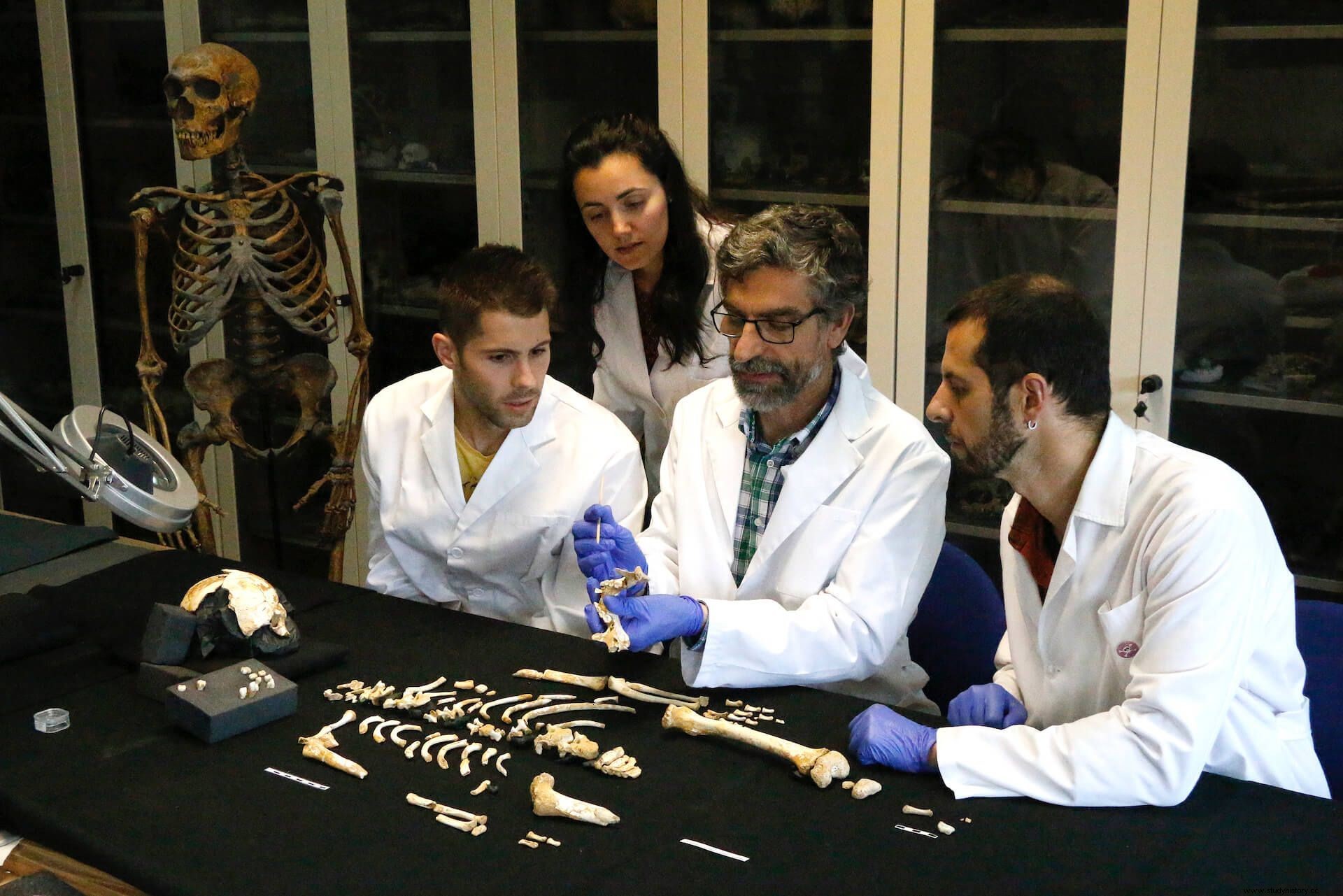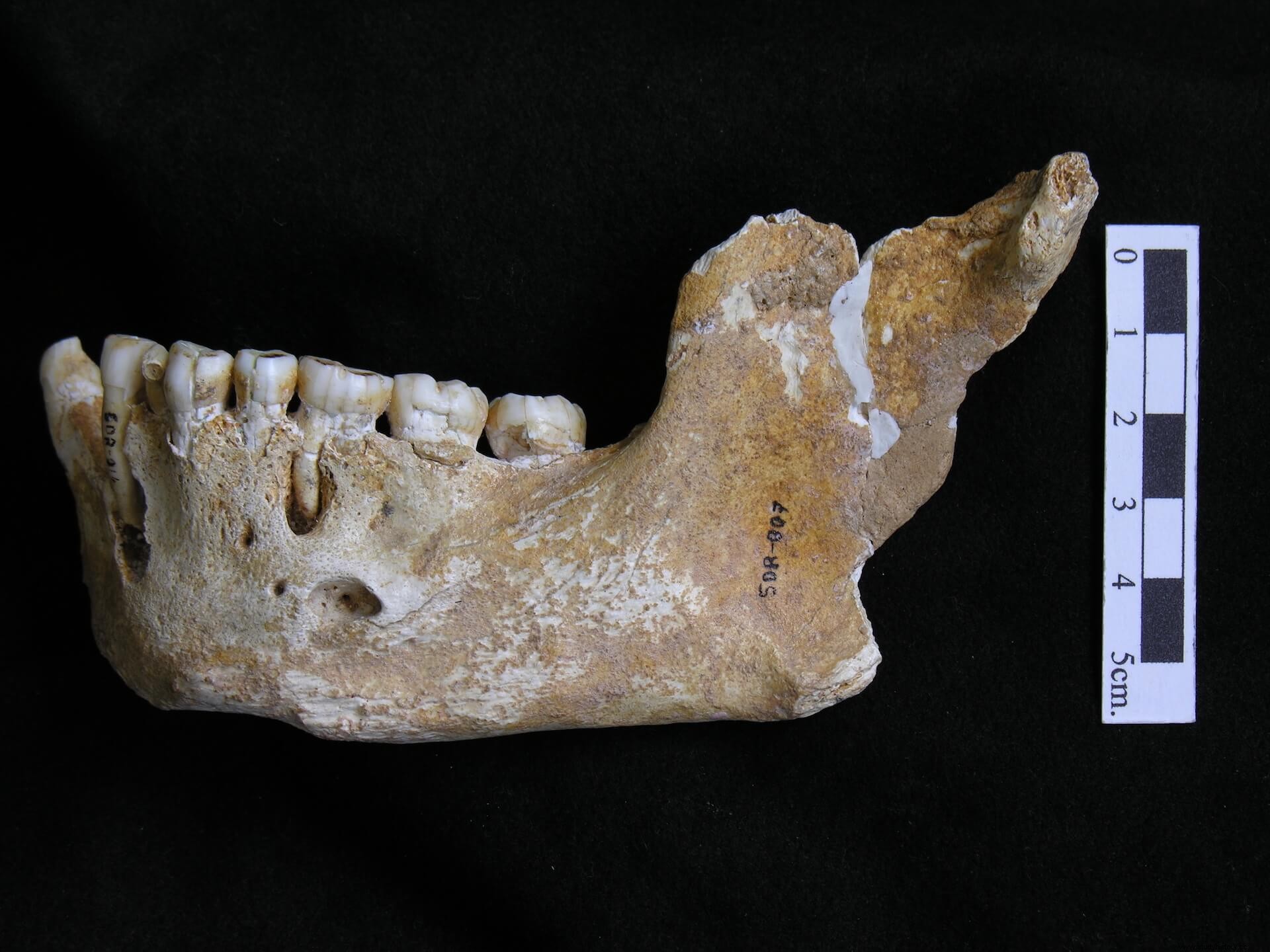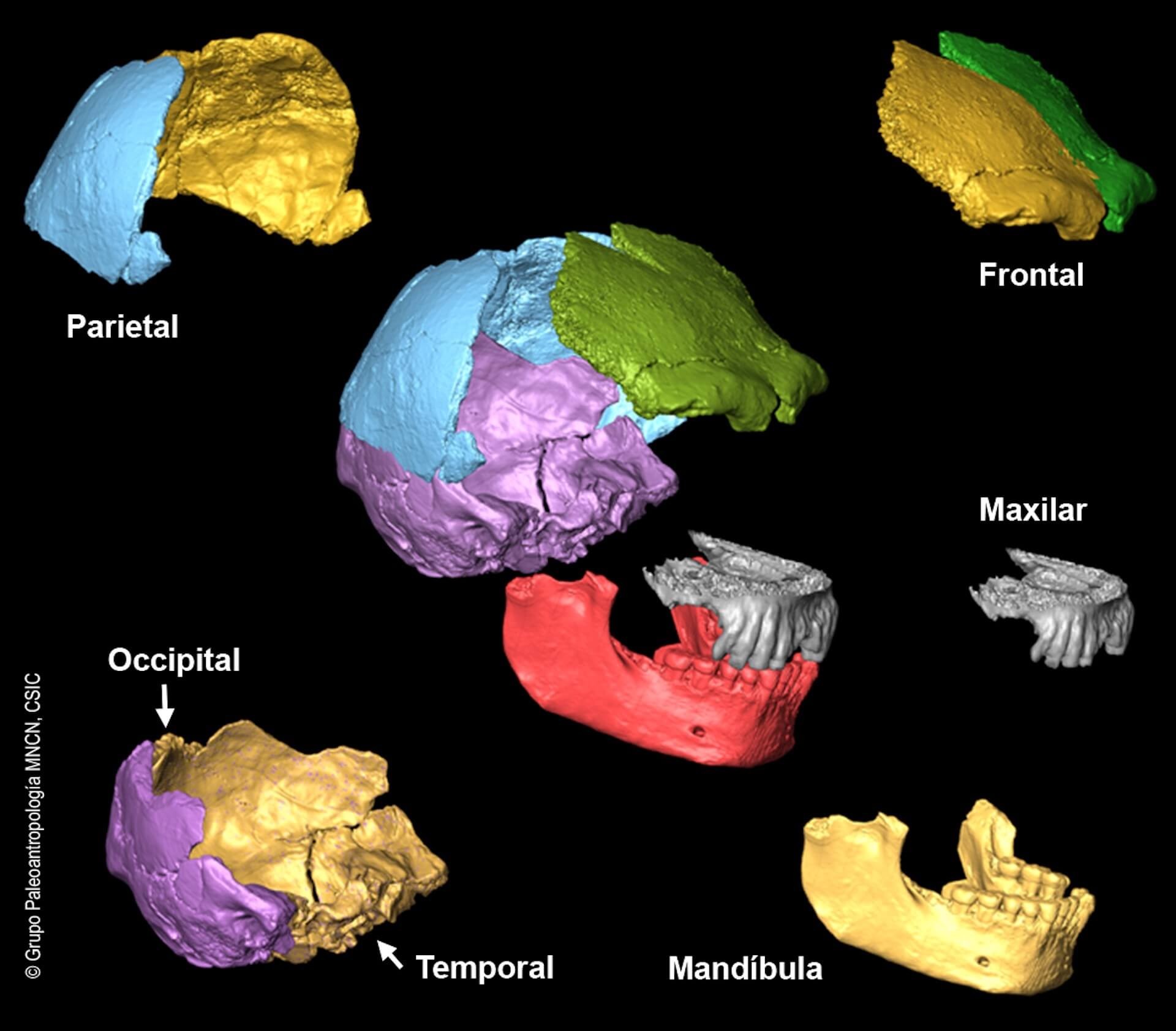
Early paleoanthropological studies of fossils Neanderthals from El Sidrón were undertaken on a sample without a documented archaeological context. After the systematic excavations undertaken from 2001 by Prof. Javier Fortea, Professor at the University of Oviedo, an abundant collection of human fossils extracted under scientific conditions was recovered in successive excavation campaigns. It was in 2003 when the Paleoanthropology Group of the MNCN-CSIC that I direct became responsible for its paleobiological research. After the untimely and unfortunate death of Prof. Fortea, Dr. Marco de la Rasilla took over the direction of the field work, thanks to which the collection increased considerably.
From the sustained scientific analysis of the collection over these years we can highlight two key general aspects. First:the El Sidrón collection has come to fill a secular void in Spanish paleoanthropology . Unlike other neighboring countries where the Middle Palaeolithic human fossil record is rich and diverse, the Iberian Peninsula has lacked a truly representative sample. Fortunately, El Sidrón has provided the best collection of Homo neanderthalensis fossils. in this geographical space and one of the best in the world. To everyone's satisfaction, the remains of El Sidrón, due to their abundance, state of conservation and wealth of information, more than fill this historical gap.
Second. Scientific research carried out in recent years has made a key contribution to changing the concept of Neanderthals both in Spanish society and worldwide. During these years of research, a constant flow of information has been established from the scientific field to society through news, informative talks, exhibitions, documentaries, etc., reviving the growing interest in human evolution in Spanish society. Likewise, the results obtained have contributed significantly to making the Neanderthal universe known and understood by the general public, stripping them of their crude and dehumanized image, placing them at their right point as a human species so different and at the same time so close to ours.
As a more specialized title, a new way of excavating has been inaugurated in this site, understanding the recovery of records in a site in a multidisciplinary context. As an example, it is possible to cite the design and development of a novel methodology aimed at making it possible to extract ancient genetic material:the Clean Excavation Protocol. As we know, DNA can provide enormous information about organisms that have already disappeared, but to do so from the outset, even before extracting the fossil, rigorous conditions must be observed to avoid contamination with modern DNA, on the one hand, and to avoid contamination with modern DNA, on the other. promote the non-degradation of the potential genetic material. Linking with this, a relevant contribution of the Sidrón Project, and of revolutionary consequences in the world of archaeo-paleontology, has been its contribution to the studies of Paleogenetics and Paleogenomics, thanks to the close collaboration with the CSIC Research Professor, Dr. Carles Lalueza-Fox. In this area, our participation in the Neanderthal Genome Project stands out. The excellent preservation of DNA in the El Sidrón fossils, as well as a novel methodology (the already mentioned Clean Excavation Protocol) has enabled numerous studies in this area that have meant a qualitative leap in terms of information on Neanderthals as organisms, down to the gene level of resolution, with examples in mitochondrial DNA, FOX P2 genes, MCR1, blood group, bitter taste, sediment DNA, etc.

On the other hand, with the identification and characterization (sex and age range) of the 13 from El Sidrón and the individualization in some cases of the postcranial elements of each individual, especially remarkable in the juvenile individual El Sidrón J1, a partial skeleton has been achieved and its recent publication in the journal Science . In addition, by analyzing the mitochondrial DNA of 12 of the individuals, something unprecedented has been achieved to date:the establishment of kinship relationships between the members of this fossil human group, with behavioral/cultural implications in the Neanderthal world. A model of patrilocality (change of residence of women and permanence of men in the parental sphere) was proposed, and is accepted by the international scientific community, as an eco-reproductive strategy of Neanderthals.
Another field of research undertaken that affects numerous aspects of the paleobiology of the individuals of El Sidrón, as well as the rest of this species, has been revealed through the detailed study of different skeletal systems, such as:aspects of diet, manual laterality, acquired and congenital pathologies, developmental biology and skeletal/nervous system growth, paleoneurology, height and weight determination, functional/metabolic aspects, differences between Neanderthal populations, etc. . Likewise, cultural/behavioral aspects have become evident:cannibalism, medication, use of medicinal plants, postural habits, division of labor both by sex and by age classes, use of dental picks and herbs for oral hygiene, using the mouth for activities non-chewing, use of bitumen possibly to handle stone tools, etc.
Today, the El Sidrón fossil collection and the diversity of analyzes developed around it constitutes an mandatory international reference . However, there is still a long way to go in the study of the paleobiology and evolution of the Neanderthals of El Sidrón. We can group the upcoming tasks into four large sections:
Neanderthal body research . The pelvic-lumbar region holds mysteries not yet revealed. The lung capacity already calculated opens the way to the functioning of the cardiac system. All of them are aspects to date still unknown. In a more classic but no less relevant line is the microstructural analysis of the dentition using computerized microtomography techniques.

Under the term paleobiology we include a wide spectrum of aspects related to the life of the species of the past. It stands out in our approach to the future to continue with the study of Neanderthal growth to reveal how the unique way of growing of current humans throughout evolution has been configured. The El Sidrón fossils have the potential to reveal aspects of the origin of human adolescence, a study currently in its initial phase. Likewise, through the so-called lines of enamel hypoplasia, we want to reveal the patterns of lactation in these populations, the mother-child energy relationships and the analysis of the critical period that involves the transition from a diet based on breast milk to a diet based on breast milk. solid.
DNA analysis . In close collaboration with national and international scientists specializing in the field, new trials are under way to extract genetic material from sediments, exploring its conservation in clay vs calcareous concretions, proximity/distance to skeletal remains, etc. Conservation in genomic libraries of DNA sequences used in previous studies sleeps waiting for new uses. One of the great advances in recent science has been revealing the presence of archaic DNA in our chromosomes. This fact has unfolded an overwhelming field of biomedical research to determine the effect of these archaic genes on our lives. El Sidrón patiently awaits its turn to reveal itself once again as a fundamental sample for the development of this discipline.
And finally, we must highlight the road still to be traveled in the field of quality scientific dissemination . The transfer of knowledge to society has always been our priority objective. Conferences, articles in the press, exhibitions and books have been and will be the vehicle for transmitting the knowledge acquired.
